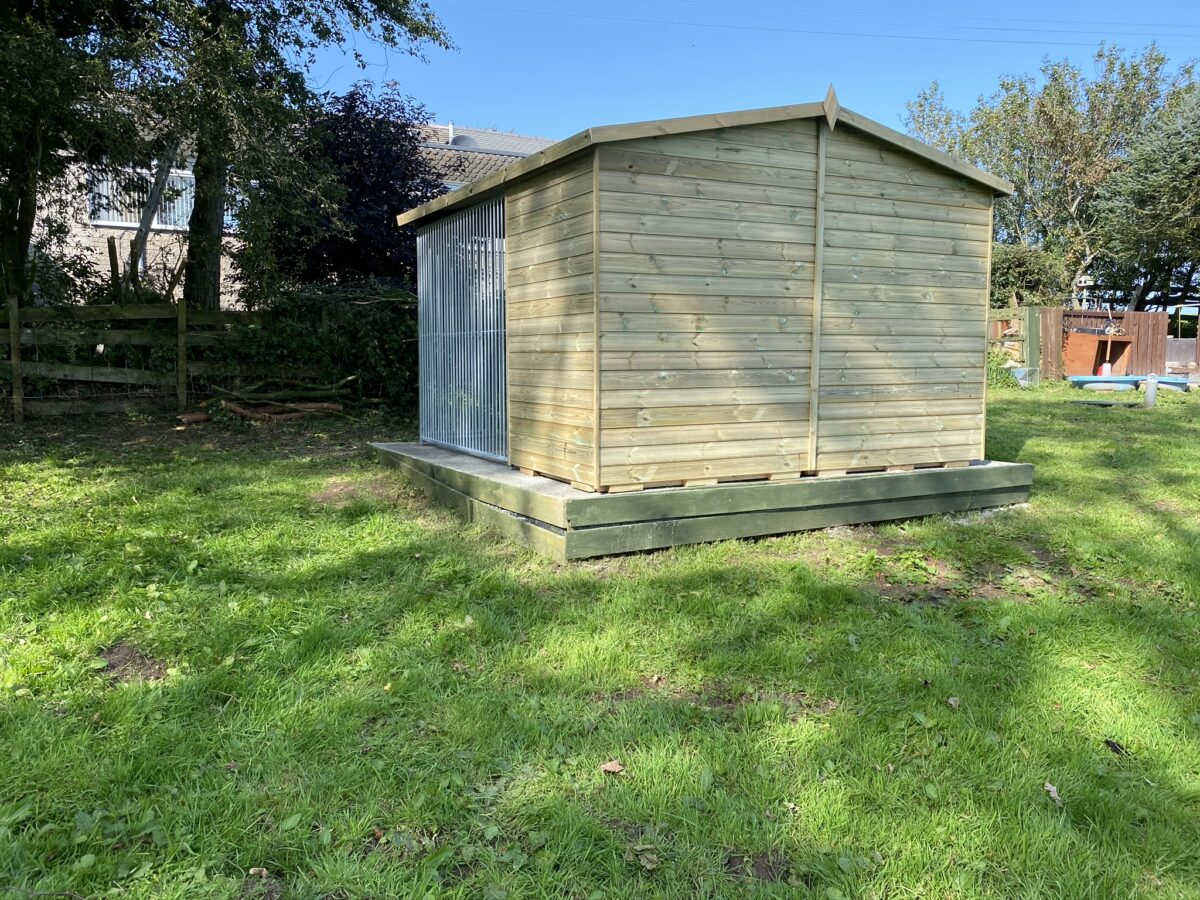Dog Kennels – Our Frequently Asked Questions
When it comes to choosing the correct kennel for both your and your dogs’ needs we’re here to help. As specialists, we take pride in every kennel we make and nothing gives us more pleasure than knowing we’ve found the perfect match for you and your pets. Every dog is unique and different (that’s what we love so much about them!) No matter the breed or the separate needs of man’s best friend we are sure we have the right kennel for everyone’s requirements.If you are beginning to think about purchasing a kennel or looking at what’s available on the market, this page is for you. To help make your decision a little clearer, we’ve highlighted our most frequently asked questions, in the hope that they may also answer yours.
How much does a dog kennel cost?
The simple answer to this is that they vary due to materials, size and additions. We offer smaller garden kennels right up to large multi-bay blocks, to ensure you’re covered. Our popular Tatton single dog kennel starts at £560 and our largest Sterling kennel block with added shed comes in at £3,280.00. These are our guideline prices, as we make all our kennels on-site with a joiner, allowing for a customisable approach, we can discuss relevant additions and solutions whilst ensuring these are kept within your budget.
What is the best way to keep a dog kennel clean?
Firstly dogs thrive on routine, so if you set up a weekly cleaning schedule (for bigger breeding kennels we recommend daily) it will not only help the general hygiene but also the happiness of your dogs. As all of our kennels are designed with functionality at the forefront, we offer wipe clean surfaces and lining in our kennels to make this a quick and easy task, rather than a daily chore! This is also considered in our construction, the timber is tanalised therefore no wood treatment is needed. A handy tip that we always recommend, when your kennel is not in use, leave doors open and change the bedding often to allow airflow and ventilation – the same as you would in your home.
What size dog kennel do I need?
We always recommend the size of your kennel based on the current size of your dog bed or crate, this gives us an idea of the space your dog needs to be comfortable. So for instance, the smaller the dog, the smaller the kennel. The run should also have enough space for toileting and the dog being able to turn and stretch out, not only for their wellbeing but also to ensure you get the most for your money. The key is to allow them a comfortable space without feeling too claustrophobic and avoiding excess space. Very similar to us humans really!
What breed of dog should not be housed outside?
We work with you to ensure your dog is properly housed, no matter the size or temperament. As specialists in this area, we can safely suggest upgrades and additions to our classic structures, such as draught screens and insulation to help keep temperature up for smaller breeds that could suffer from being cold. Our main aim is for you and your dogs to be comfortable and happy.
Should I have a separate kennel and run?
This all depends on the nature and unique personality of the dog, pets can sometimes be happier sharing a larger single kennel, whereas working dogs tend to appreciate their own space. We’ll work with you to decide what is best.
We hope this helps answer a few of your questions regarding dog kennels. Please feel free to contact us to discuss your exact needs and wants from your kennel, we’re a small family run business, so we know the importance of a human opinion.



































